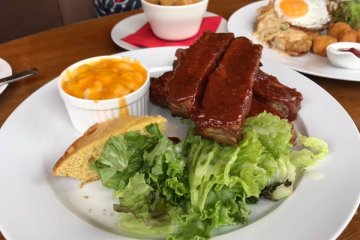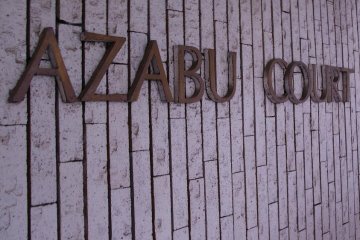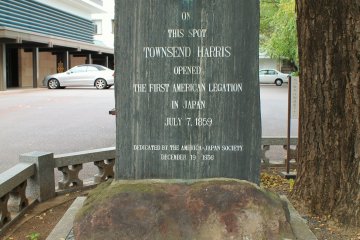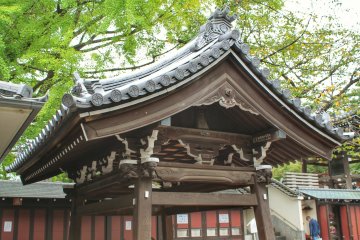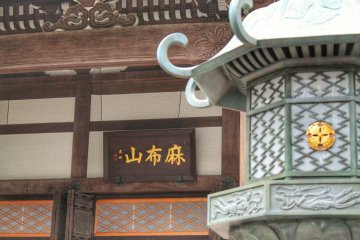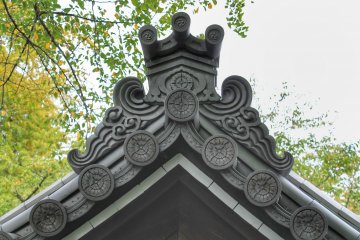Zenpuku-ji was founded by the Buddhist monk Kobo Daishi in the year 824 and later became important as the residence of the first American legation in Japan in 1859. It is one of the oldest temples in Tokyo.
Only a few minutes walk from Azabu-Juban Station, you will find Zenpuku-ji in a quiet area. The temple is famous for four main things. Besides its importance of being founded by one of Japan’s great historical figures, you’ll see a sign of its more recent political significance immediately when you enter the temple area and have a look at the monument stone for Townsend Harris.
After the United States concluded the Treaty of Amity and Commerce with Japan in 1858, the American consul general Harris was promoted to minister and transferred to Zenpuku-ji, where he opened the first American legation in Japan in 1859. He used rooms of the temple as residence until parts of the temple were burnt down in an attack of samurais from Mito.
When you turn to the left and keep on walking, you will face a Buddhist cemetery that goes all the way up on the hill to your right and will treat you to a nice view over Tokyo if you make the effort to climb the slope. You can even see Tokyo Tower from here! Fukuzawa Yukichi, the founder of the Keio University (and whose picture you can see on the 10,000 yen bill), is interred at Zenpuku-ji.
Another thing that makes Zenpuku-ji special is not up the hill, but to your left: a giant gingko tree. I have seen many gingko trees in my life, but this one is really impressive. It measures nearly 10 meters in girth and is about 20 meters high.
Legend has it that when the temple was converted to a sanctuary of the Jodo Shinshu sect in 1232, the founder Shinran advised his followers to go on the ground. The seeds of their prayers grew into a gingko tree.
The tree was partly burnt due to bombing in the Second World War, but it is still growing and has massive, strangely shaped branches. The gingko was designated a National Natural Monument in 1926 by the government. If you come here in autumn, take a fallen off leaf as souvenir and put it in your travel journal!



